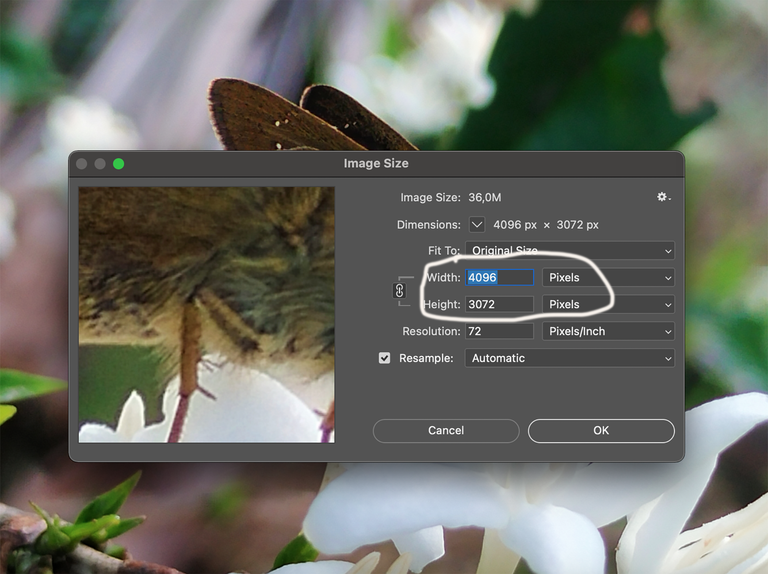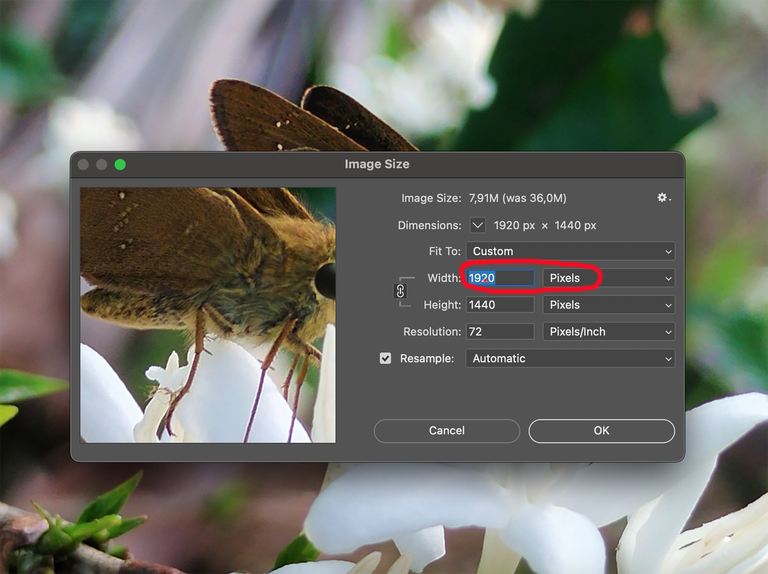
INTRODUCTION ✅
In my curation work, I notice that there are many posts that take a long time to appear in the feed, especially those with several photos.
I use fast internet, both on the telecom operator's data (smartphone) and on the router at home (pc). I therefore conclude that the delay is due to the weight (megapixels) of the files (photos).
When I “Safe Page As” the publication in question, I look at the size of the photos and notice that they are excessively large (and therefore heavy) - which makes it difficult to read them smoothly on the internet.
I also notice that many people publish using their smartphones. There's no doubt that smartphones have evolved, and in order to offer such high quality they've increased the size of the files (megapixels translates into size, physical or virtual).
If you're using photos for physical printing, the size of the file counts (the bigger, the better the print). It doesn't work like that for the internet. The photos need to be resized, otherwise:
It takes you longer to upload your photos to the publication you're editing.
We, the receivers: we'll wait until the “heavy publication” drops to consume it.
Delay in authenticating blocks (?). I'm not entirely sure about this. From the research I've done, heavy files influence authentication time. As there are different types of authentication in blockchain technology, I don't know if it applies here at HIVE.
I would appreciate it if any witnesses or stakeholders reading this publication could enlighten me, please.

EXAMPLE ✅
I've taken the liberty of using a post by @reachdreams as an example.
I'm doing this because you're an excellent person and you won't be upset or offended by being used as an example. In fact, a while ago we exchanged comments in which I suggested that you resize your photos. You've taken my suggestion and your posts are now falling smoothly into the feed of the front-ends.
I noticed that the photos published were oversized for the internet. Hence the delay in publication.

[I'd like to take this opportunity to invite you to visit the feed of this lover of nature, especially insects. He turns his posts into greenery that washes our eyes every morning. They are also authentic botanical lessons]

IDEAL SIZE FOR PUBLICATION ✅
Before I suggest this, let me remind you a little of history so that you can understand the evolution of appropriate sizes.
In the early days of the internet, computer monitors were small and the ideal size was 640x480 pixels (px). Correspondence: in centimeters = 22.50x16.93. In inches = 8.889x6.667.
Later, with the appearance of websites, the size increased (approximately) to 800x600 px. Then it evolved: 1200x800, 1600x1200, 1800x1600. The evolution was proportional to the size of the display monitors.
I suggest measuring 1920 x (...) * pixels
*It's a variable. It depends on the image format (1x1, 3/2, etc).
In this case it was 1440 px, in keeping with the format adopted by the author. The 1920 px is always on the larger side (width or height, depending on whether it's horizontal or vertical).

This ensures the quality of the photos, both on smartphones and Full HD monitors. As it is lighter with resizing, it is faster to upload and smoother to view.

SOLUTION: HOW TO DO IT? ✅
📱 If you're publishing via smartphone:
There are several options for resizing photos, including native apps, online tools and third-party software.
Photo & Picture Resizer is a free smartphone application that solves the problem well. It's simple and intuitive. There are others.

To resize: you will need to choose the images, adjust the width and height values (in pixels) and save for later publication.
🖥 Publishing is done via the PC:
Apple (macOS)
The native program does it itself, iPHOTO. There's also Photo Resizer.
Windows
Paint and Paint 3D are native tools that allow you to resize images easily. There's also Photo Resizer, which is very simple.

CONCLUSION ✅
This publication is only a suggestion, not an obligation. Everyone does as they see fit. I respect and accept those who have different opinions.
I confess that I'm quite anxious when it comes to curating, I have little time (and voting power) to do it. A slow publication is a no-go for me. If I already know the author, I have a bit of patience to wait. I admit I'm ruthless, and unfair, but half a second in my brain is an eternity😖. Processing wants to be quick. I hope I've been helpful.


I continue to promote initiatives that add value to the HIVE ecosystem.
“Banner for Boost” campaign by @CryptoCompany and @PowerPaul deserves focus. More info.

Today I'm feeling more motivated. I present to you the banner that will finish off all my publications in the future. It was designed by graphic designer @ravenmus1c. I'm very pleased with the result because it turned out exactly as I had dreamed. She's excellent. [Friendliness + Creativity + Efficiency = Recommendation].





